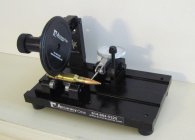bigedp51
Below Mr. Salazar "first" full length resizes the case in a FL bushing die with a larger bushing for the first step. "THEN" he uses the very neck die your are using CatShooter with a smaller bushing to reduce the runout, in a two step process. Please note he is "FULL LENGTH" resizing and the "rat turd in the violin case method" and "NOT" just neck sizing.
Two-Step Sizing and Case Neck Concentricity
by: Germán A. Salazar
http://riflemansjournal.blogspot.com/2010/04/reloading-two-step-sizing-and.html
P.S. Since you owned two Enfield rifles and still talked down about them you are now at the bottom of my case greaser master list "again" and must work you way up from the bottom to the top "again". Your new title is catshitgreaser #20,0047 and you have a long, long way to get to the top of the approved listing.
Sad, too bad, you Enfield cad.

P.P.S. You are also off my official Enfield reading list and your Enfield library card is revoked.

Plus you will not be getting an Enfield shirt for Xmas.

Two-Step Sizing and Case Neck Concentricity
by: Germán A. Salazar
http://riflemansjournal.blogspot.com/2010/04/reloading-two-step-sizing-and.html
P.S. Since you owned two Enfield rifles and still talked down about them you are now at the bottom of my case greaser master list "again" and must work you way up from the bottom to the top "again". Your new title is catshitgreaser #20,0047 and you have a long, long way to get to the top of the approved listing.
Sad, too bad, you Enfield cad.

P.P.S. You are also off my official Enfield reading list and your Enfield library card is revoked.

Plus you will not be getting an Enfield shirt for Xmas.

















